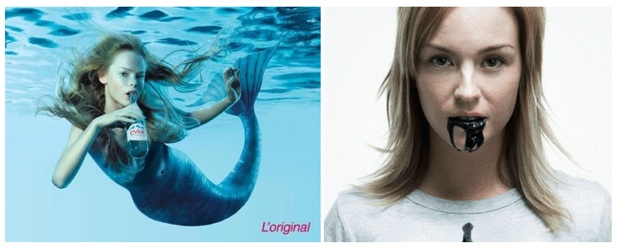From an article at treehugger:
"Recycled Island" Turns Ocean Plastic into a Paradise
by Stephen Messenger, Porto Alegre, Brazil on 06.28.10

Image via Recycled Island
Ever dreamed of living on a giant island of plastic?
Well, with all the plastic that floats around in the ocean as a toxic soup threatening all manner of marine life, one architecture firm has a bold vision to create an eco-paradise called "Recycled Island" in the Pacific Ocean with sustainability at its core. It's a bold plan, but not only would the project help clean the oceans, the firm claims, it might just be a perfect home for climate refugees--and a way to turn those toxic patches of ocean plastic into an island that may do the planet some good.
The idea for the massive Recycled Island was developed by WHIM architecture as a way to clean the oceans and create a new floating habitat dedicated to sustainable living, complete with beaches, farms, and buildings. Ideally placed in the Pacific, between San Francisco and Hawaii, the island would be some 4 thousand square miles of plastic 'land' upon which plastic communities would be built.

According the project's plan, the plastics used to build the island will come from the giant North Pacific Gyre. Once collected and cleaned, the material could then be reformed into floating platforms of recycled plastic. "This will clean our Oceans intensely and it will change the character of the plastic waste from garbage to building material," says WHIM. "The gathering of the plastic waste will become a lot more attractive."

With the land mass built, the firm believes a sustainable island paradise will flourish,according to the project's Web site:

An important component in making Recycled Island sustainable comes from the cultivation of seaweed, which would provide food, fuel, and medicine, as well absorb CO2 and offer a habitat to fish.
While the plan to build an island by recycling the plastic that pollutes our oceans is certainly a bold one, if not downright impossible, it is in line with a number of ambitious recycling projects that have indeed come to fruition. Certainly, the planet has no pressing need for a new island, sustainable or otherwise, but it would be a huge improvement on the toxic masses of ocean plastic inadvertently in place already. And who knows, maybe Radiohead could write a song about it.
More on Recycling Plastics
Massive Plastic Bottle Building Unveiled in Taiwan
Rome's Trashiest Hotel Built With 12 Tons of Litter
Plastiki Ship Makes its Way Across the Pacific

According the project's plan, the plastics used to build the island will come from the giant North Pacific Gyre. Once collected and cleaned, the material could then be reformed into floating platforms of recycled plastic. "This will clean our Oceans intensely and it will change the character of the plastic waste from garbage to building material," says WHIM. "The gathering of the plastic waste will become a lot more attractive."

With the land mass built, the firm believes a sustainable island paradise will flourish,according to the project's Web site:
-The habitable area is designed as an urban setting. Nowadays already half of the World population lives in urban conditions, which has a huge impact on nature. The realization of mixed-use environments is our hope for the future.-The island is constructed as a green living environment, from the point of view of a natural habitat. The use of compost toilets in creating fertile ground is an example in this.
-It is a self sufficient habitat, which is not (or hardly) depending from other countries and finds its own resources to survive. The settlement has its own energy and food sources.
-The island is ecologic and not polluting or affecting the world negatively. Natural and non polluting sources are used to let the island exist in harmony with nature.

An important component in making Recycled Island sustainable comes from the cultivation of seaweed, which would provide food, fuel, and medicine, as well absorb CO2 and offer a habitat to fish.
While the plan to build an island by recycling the plastic that pollutes our oceans is certainly a bold one, if not downright impossible, it is in line with a number of ambitious recycling projects that have indeed come to fruition. Certainly, the planet has no pressing need for a new island, sustainable or otherwise, but it would be a huge improvement on the toxic masses of ocean plastic inadvertently in place already. And who knows, maybe Radiohead could write a song about it.
More on Recycling Plastics
Massive Plastic Bottle Building Unveiled in Taiwan
Rome's Trashiest Hotel Built With 12 Tons of Litter
Plastiki Ship Makes its Way Across the Pacific


 Ads from Evian and Brita
Ads from Evian and Brita







